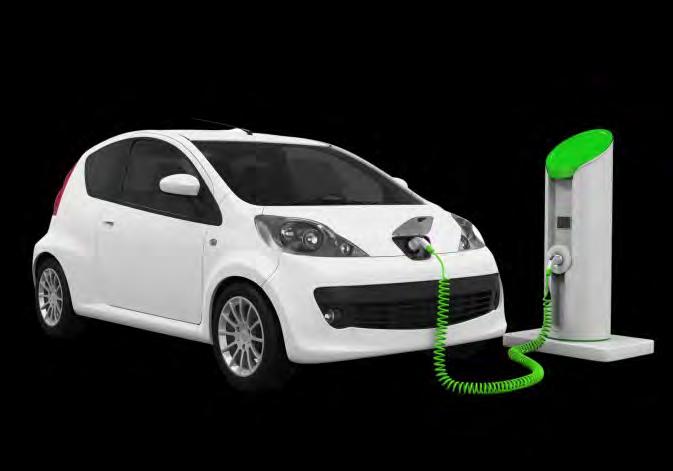
6 minute read
Saving Money and Reducing Emissions At Home
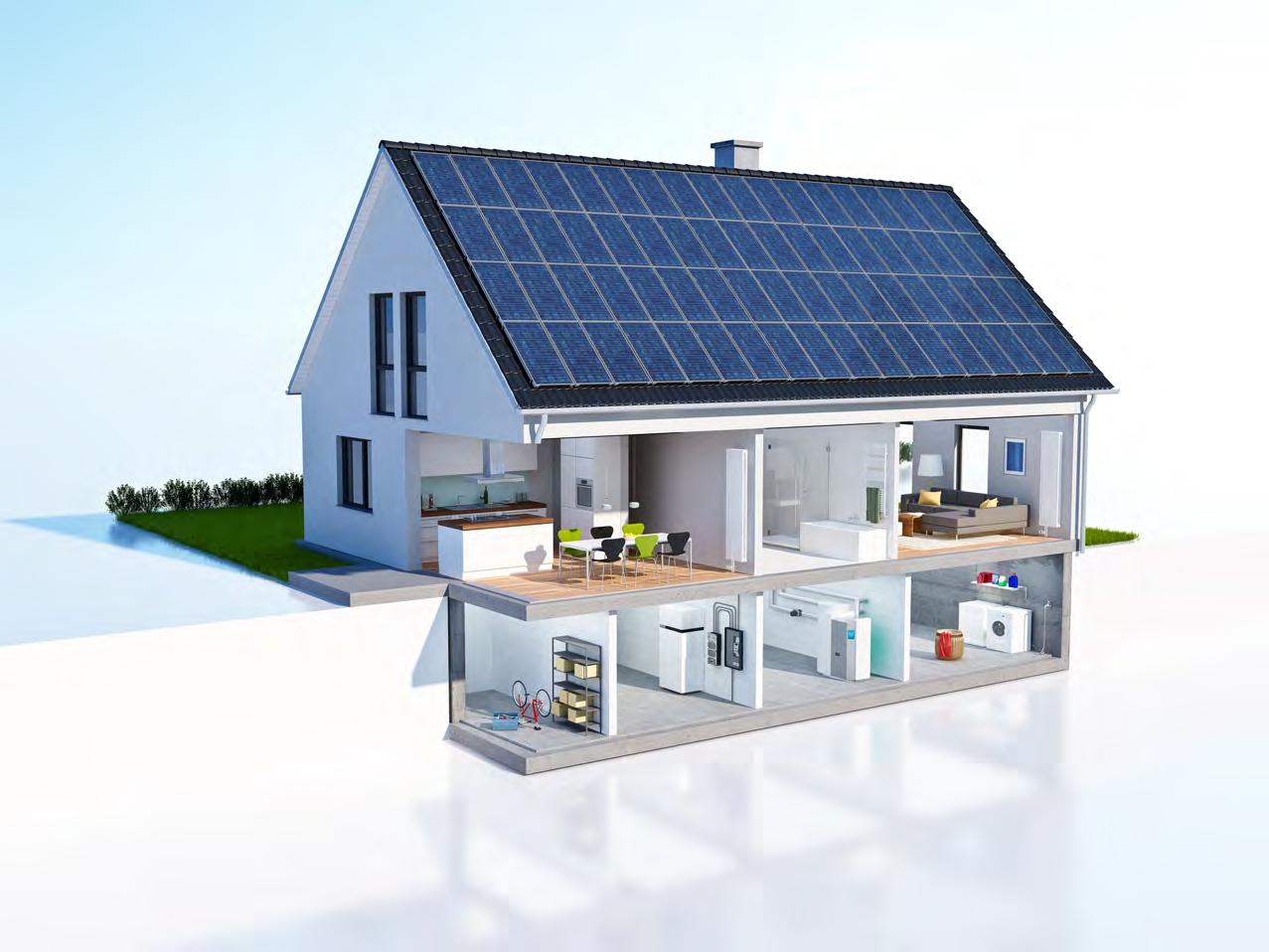
Transition to high-efficiency electric heating, cooking, hot water systems, appliances, and electric vehicles, all powered by renewable electricity, to effectively reduce pollution and carbon emissions to zero. For many households, rebates and incentives can help make pay for upgrades to reduce your energy consumption and greenhouse gas emissions.
Below are key steps you can take and links to information on federal tax incentives supporting them included in the 2022 Inflation Reduction Act:
Calculate what your household can get from the Inflation Reduction Act here:
Strategy BE 1
Improve total Region wide residential, commercial, educational, institutional, and industrial building energy efficiency by 10% by 2030. (electricity and heating fuel)

The US Energy Information Administration reports that homes constructed after 2000 consume 15% less energy per square foot compared to those built in the 1980s, and 40% less than those pre-1950. Therefore, there's considerable scope for enhancing energy efficiency by retrofitting older homes with modern technologies. There are over 52,000 homes built before 1980 throughout the region. Making up 54% of owned and 54% of rented homes, upgrading the energy efficiency of these older structures could significantly curb community energy use, especially in terms of heating fuel consumption.
Go to Implementation for supporting actions.
Strategy BE 2
Increase adoption of high performance building construction technology, achieving 1/2% Net Zero households and commercial properties Region wide by 2030.
High-performance buildings, offering 30% more energy efficiency than standard buildings, provide numerous benefits. They reduce energy usage and carbon emissions, advancing environmental sustainability. Lower utility bills result in significant long-term savings. Utilizing advanced materials and technologies, these buildings require less maintenance, further cutting costs. Enhanced indoor air quality and natural light boost occupant health and productivity. Net Zero buildings, a highperformance subset, minimize energy use and generate equal power onsite, typically using renewables like solar or wind. This not only adds resilience against power outages but also yields additional savings. Hence, they are an optimal solution for a sustainable future.
Go to Implementation for supporting actions.
Strategy BE 3
Achieve 20% residential and commercial and industrial building "fuel switching" from on-site fossil fuel combustion to electrification by 2030.
In Region 4, about 82% of heating comes from natural gas, 10% from propane, 4% each from fuel oil and wood. As the regional electric grid expands its renewable electricity share, targeting building heating fuel becomes vital for emissions reductions. To achieve broad-based carbon reductions, it's necessary to reduce and eventually eliminate all fossil fuel heating, including oil, propane, and natural gas. This is where building heating fuel switch to electrification plays a key role. This process involves replacing traditional fossil fuel-based heating systems with electric ones. By doing so, it not only reduces carbon emissions but also improves energy efficiency. Moreover, this transition is a central requirement to achieving regional GHG reduction goals in the building sector.
Go to Implementation for supporting actions.

Strategy BE 4
Increase renewable energy from 0.8% to 20% of Regionwide residential and commercial electric use by 2030.
(distributed solar and purchased renewable through utilities)
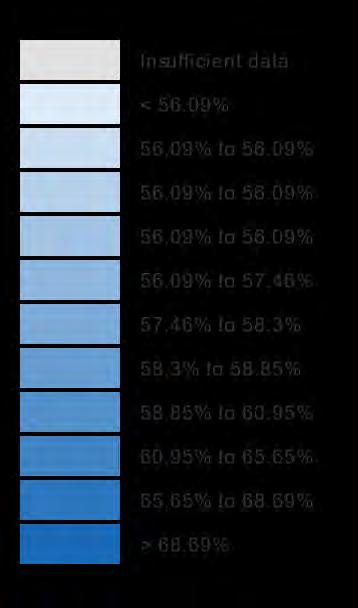
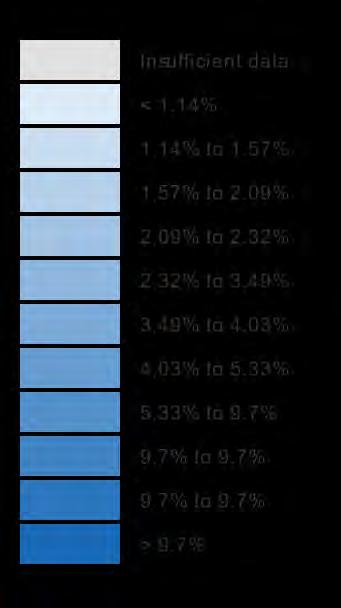
Expected reductions in GHG emissions from grid-supplied electricity shouldn't diminish the focus on consumer-driven renewable energy purchases to meet our GHG reduction targets. For those unable to install solar panels, buying renewable energy from utility providers or community solar subscriptions offers a path to Net Zero electricity and aids in greening the state's power grid. For properties suitable for solar, increased on-site renewable energy use offers multiple benefits beyond reducing GHG emissions, including cost savings and enhanced energy resilience. This wide array of benefits underscores the importance of increased renewable energy adoption for the community's sustainable future.
Go to Implementation for supporting actions.
Region 4’s Local Governments Leading The Way
Local governments can pioneer climate action by ensuring their buildings are energy-efficient, powered by renewable sources, and heated without fossil fuels. Such initiatives demonstrate commitment to sustainability, set a positive example for residents and businesses, and drive local economies towards low -carbon solutions. This leadership role can inspire broader community engagement in climate action, amplify impact, and expedite progress towards our shared environmental goals. The following strategies are key to achieving this leadership in Minnesota Region 4:
Strategy BE 5
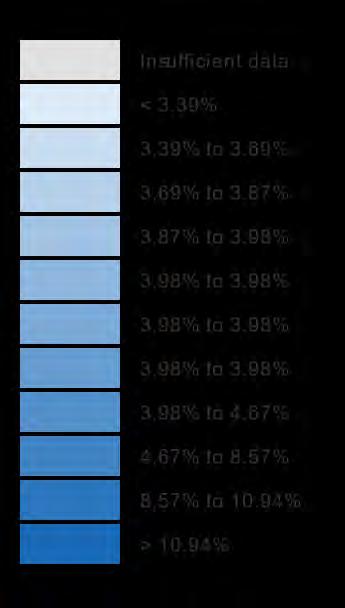
Strategy BE 6
Strategy BE 7
Improve total regional county and municipal government building energy efficiency by 12% by 2030. (electricity and heating fuel)
Achieve 20% regional county and municipal building thermal “fuel switching" from on-site fossil fuel combustion to electrification by 2030.



Increase renewable energy to 25% of region county and municipal government operations electricity consumption by 2030.
Go to Implementation for supporting actions.
Planned Sector Emission Reductions Through 2030
The strategies and actions included in this section of the Climate Action Plan are projected to reduce the region’s annual GHG emissions by 574.070 metric tons (MT) annually by 2030 - a 28.3% reduction from 2021 levels. Changes in business-as-usual impacts over the same period are anticipated to reduce an additional 14,684 metric tons. The result is a total region-wide Buildings and Energy sector reduction of 29% below 2021 levels.
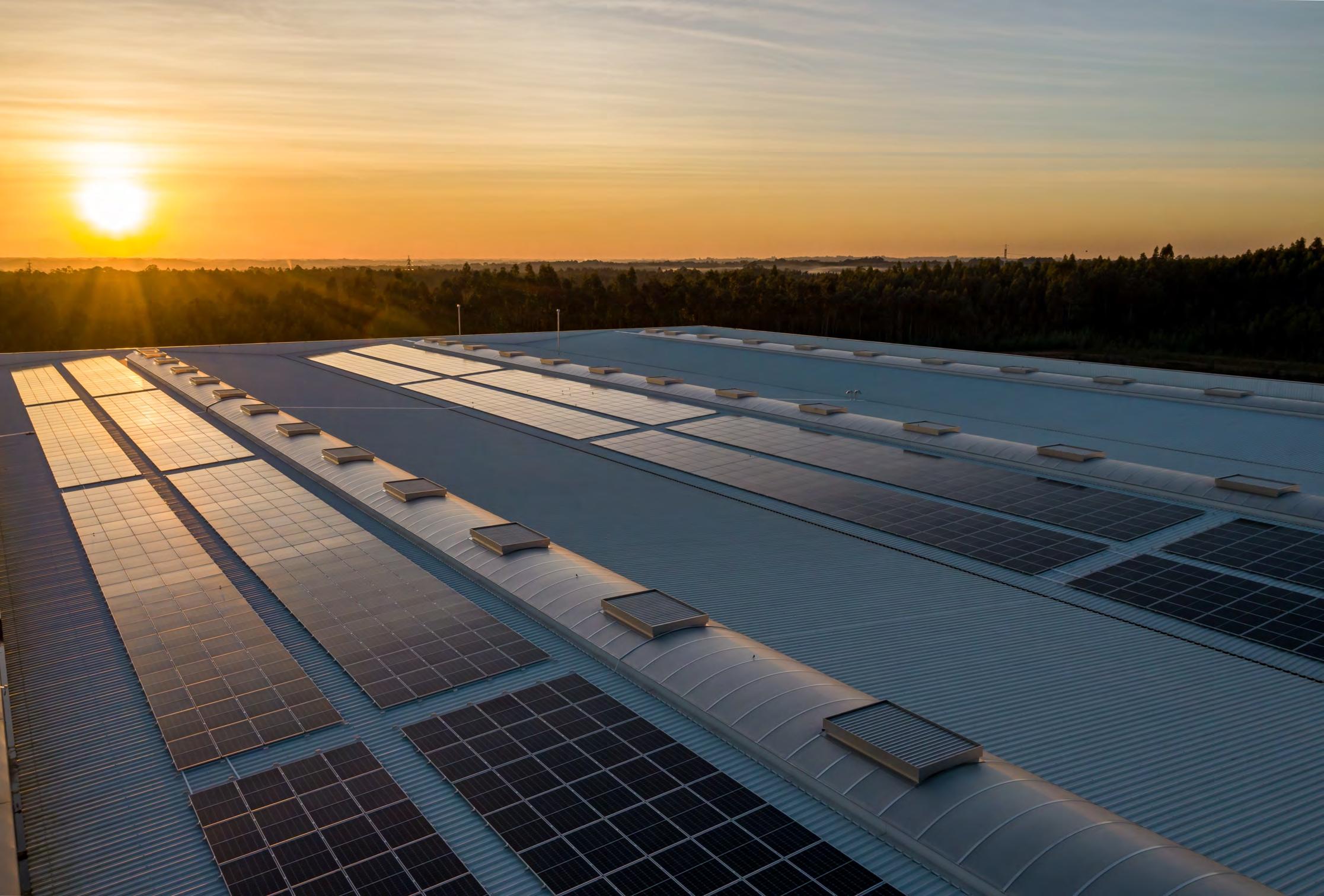
When compared to 2021 emissions, this is equivalent to eliminating over 70,200 of the region’s current vehicles from the road, or 11.6 billion cubic feet of human-made greenhouse gas atmosphere annually by 2030.
Sector Emissions Reduction below 2021 by 2030
The total change to sector emissions include CAP reductions and businessas-usual (BAU) emission changes as follows:
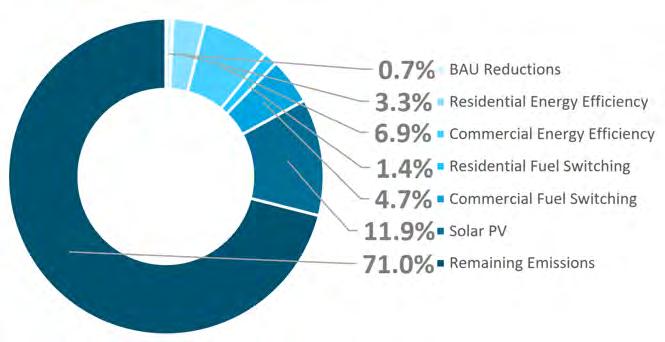
What You Can Do
You can support the goals of the Buildings and Energy section of this climate action plan as an individual, household, or a business. Here are just a few things you can do:

1. Set your thermostat 2 or more degrees higher during cooling season, lower during heating season.
2. Turn down your water heater to 120°.
3. Replace an older home thermostat with a “smart,” programmable model.
4. Replace a major appliance (e.g., refrigerator, air conditioner, furnace) with a newer, energyefficient model.
5. Replace a gas range or clothes dryer with an electric model.
6. Schedule a home energy audit with a licensed contractor or through your utility.
7. Install solar panels at your home, working with a licensed contractor. If possible, participate in a residential solar group purchasing program within the Region.
8. If you don’t own your home (or if your home is not suitable for solar) but support clean, renewable energy, enroll in your utility’s clean power option to support renewable energy.
9. Install ― or have a licensed contractor install ― more insulation in your home.
10. Install energy-efficient windows and doors, working with a licensed contractor.
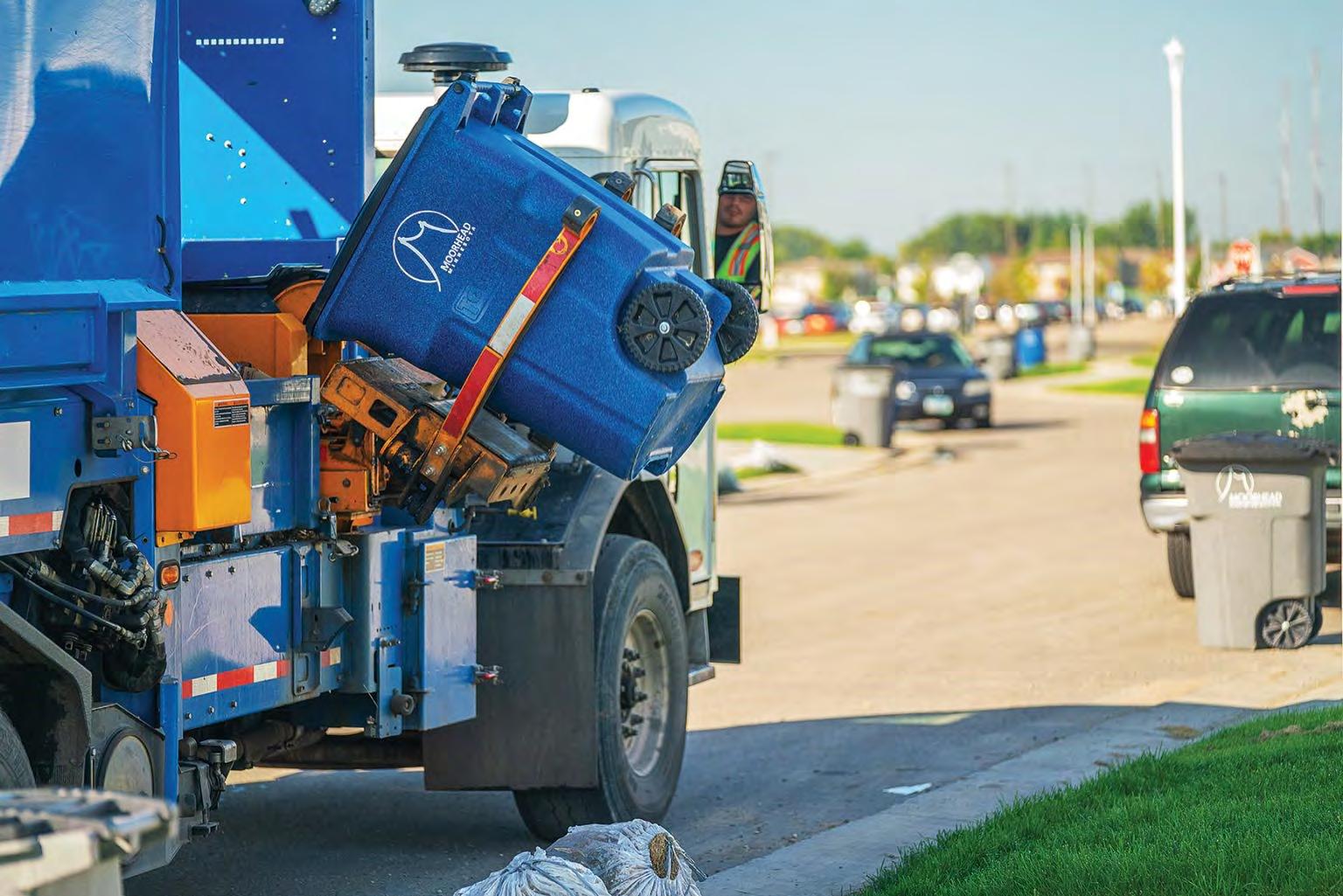





Municipal solid waste (MSW) contributes significantly to climate change, primarily through methane emissions from landfill decomposition and carbon emissions from fossil-fuelled transport. Mitigation strategies such as waste reduction, recycling, and organic collection can help reduce these impacts.
Lower waste generation reduces methane emissions by decreasing landfill volume. Improved recycling reduces the need for new resource extraction and manufacturing, saving energy and reducing carbon emissions. Composting organic waste instead of landfilling it lowers methane emissions, sequesters carbon, and provides an eco-friendly alternative to synthetic fertilizers.
MN Region 4 Solid Waste Per Capita Trends
In 2021, MN Region 4 handled 216,171 tons of MSW. Recycling accounted for 22.4% of this total, organics collection for 12.9%, refuse-derived fuel management for 32%, and landfilling for the remaining 32.7%.

Minnesota Waste Stream Changing
A Minnesota Pollution Control Agency study showed changes in waste composition since 2000, with increasing amounts of plastic and food waste but less paper. This shift indicates potential for expanding organics recycling.
Waste Characterization Study
In 2013, the State of Minnesota initiated a comprehensive, quantitative evaluation to understand the make up of the current waste stream (materials not diverted through recycling or organics collection). The classifications of waste defined in the 2013 study were organized into broad categories based on their diversion potential including: Compostables, Potential Recyclables, Potential Recoverables, and Other.
Waste Diversion Potential

Based on the State of Minnesota Waste Characterization Study, there may be waste diversion potential of up to 81.3% in the current landfilled materials (idealized maximum). Below is the breakdown of the estimated total maximum potential waste diversion (excluding waste reduction):
Equity Considerations

Incorporating fairness into solid waste management, such as waste minimization, recycling, and collection of organic waste, guarantees all sectors of the community can access and reap benefits from these services. Overcoming challenges like language, cost, or logistical issues is crucial to encourage widespread participation. Furthermore, food waste reduction could alleviate strains on economically disadvantaged households by redirecting surplus food. Ensuring equity in waste management strategies enhances environmental sustainability while fostering social justice.
Equity Program Examples:
1. San Francisco's Zero Waste Program provides equitable recycling and composting services to all community sectors, overcoming language barriers with multilingual resources.
2. Surplus Food Redistribution Programs like Feeding America reduce food waste by redistributing surplus food from various sources to the needy, aiding lowincome households.
3. The RecycleBank Program incentivizes recycling with rewards, overcoming cost barriers and indirectly supporting economically disadvantaged households.

Strategies
The strategies on the following pages guide our path in meeting our climate goals for the Waste Management sector. Each strategy is supported by a series of detailed actions to be explored and undertaken in order to carry out the vision and goals. These supporting actions are outlined in the Implementation section of this plan.
Go to Implementation for supporting actions.





